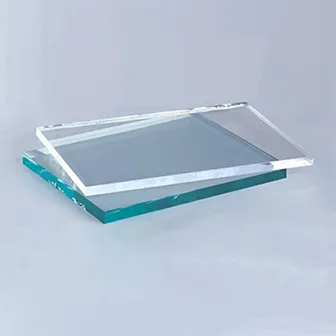Abr . 27, 2025 11:06 Back to list
Float Glass Levels and Applications Explained
Vidro float is a fundamental material in modern construction and manufacturing. It is produced by floating molten glass on a bed of molten metal, typically tin, to create a uniform folha de vidro transparente with a smooth surface. The process ensures high optical clarity and consistency, making it suitable for various applications. Different levels of vidro float are available, each designed for specific uses based on composition, thickness, and additional treatments.
Tipos de Vidro Float
Standard vidro float is the most widely used type, serving as the base material for many architectural and industrial applications. Its production involves carefully controlled cooling to prevent internal stresses, ensuring structural integrity. The glass sheet's transparent quality makes it ideal for windows, partitions, and basic glazing where clarity is essential.
Beyond standard vidro float, coated vidro float is treated with thin metallic or oxide layers to enhance performance. These coatings can improve thermal insulation, reduce UV transmission, or provide self-cleaning properties. Such modifications make this variant suitable for energy-efficient buildings and high-performance facades. The application process requires precision to maintain optical quality while adding functional benefits.
Another advanced type is ultra-clear glass sheet, which undergoes a specialized refining process to minimize iron content. This results in exceptional transparency, making it preferable for high-end retail displays, museums, and luxury interiors. Unlike standard glass, it lacks the greenish tint, offering near-perfect color neutrality. Additionally, vidro temperado colorido combines coloration with thermal strengthening, making it both aesthetically versatile and structurally resilient.
Aplicações de Vidro Float
In architecture, vidro float is a primary material for windows, curtain walls, and skylights due to its durability and light transmission properties. The ultra-clear vidro float variant is particularly valued in modern design for its ability to create seamless, distortion-free views. Its superior clarity enhances natural lighting while maintaining visual comfort, making it ideal for office buildings and residential spaces.
The use of tinted glass walls has grown in commercial construction, where solar control and privacy are key considerations. Tinted variants absorb or reflect a portion of sunlight, reducing heat buildup and glare inside buildings. Common tints include bronze, gray, and green, each offering different levels of light filtration. Beyond facades, these glass types are also used in automotive windows and decorative interior elements.
Specialized applications include the use of ultra-transparent glass in electronic displays, touchscreens, and protective coverings. Its high light transmission and minimal distortion make it suitable for high-resolution screens and optical devices. Additionally, laminated and tempered versions of vidro float are used in safety-critical installations such as balustrades, shower enclosures, and hurricane-resistant windows.
Manufacturing and Quality Control of Vidro Float
The production of vidro float begins with the precise mixing of raw materials, including silica sand, soda ash, and limestone. These components are melted in a furnace at high temperatures before being poured onto a molten tin bath. The floating process ensures an even thickness and smooth surface, critical for producing high-quality transparent glass sheets. Controlled cooling prevents defects such as warping or internal stresses.
Quality assurance involves rigorous inspections at multiple stages of production. Automated systems scan for imperfections like bubbles, scratches, or uneven thickness. Human inspectors further examine samples for visual defects before the glass is cut to size. Advanced optical sensors ensure that coated vidro float maintains uniform coating thickness, which directly impacts its performance in insulation and light filtration.
Customization options include tempering, laminating, and edge polishing to meet specific project requirements. Tempering enhances strength, making the glass more resistant to impacts and thermal stress. Laminating bonds multiple layers with interlayers for added safety and sound insulation. These processes allow vidro float to be adapted for everything from skyscraper facades to delicate electronic components.
Vidro float remains indispensable in construction and industrial applications due to its versatility and adaptability. From standard glass sheet transparent variants to high-performance ultra-clear glass sheet, each type serves distinct purposes based on optical and structural requirements. Innovations in coatings and treatments continue to expand their functionality, meeting evolving architectural and technological demands.
O futuro de vidro float lies in further enhancing energy efficiency, strength, and sustainability. Developments such as smart glass, which adjusts transparency based on external conditions, demonstrate their potential. As manufacturing techniques advance, vidro float will continue to play a critical role in modern design, offering solutions that balance aesthetics, performance, and durability.

-
What is the Difference Between Float Glass and Normal Glass?
NotíciasMay.30,2025
-
Differences Between Float Glass, Tempered Glass and Laminated Glass
NotíciasMay.29,2025
-
The Wonders of Ultra Clear Glass: Perfect Clarity for Every Application
NotíciasMay.16,2025
-
The Benefits of Wired Glass: Durable, Stylish, and Safety-First
NotíciasMay.16,2025
-
The Beauty of Pattern Glass
NotíciasMay.16,2025
-
Tempered Glass for Sale
NotíciasMay.16,2025
Relacionado PRODUCTS














